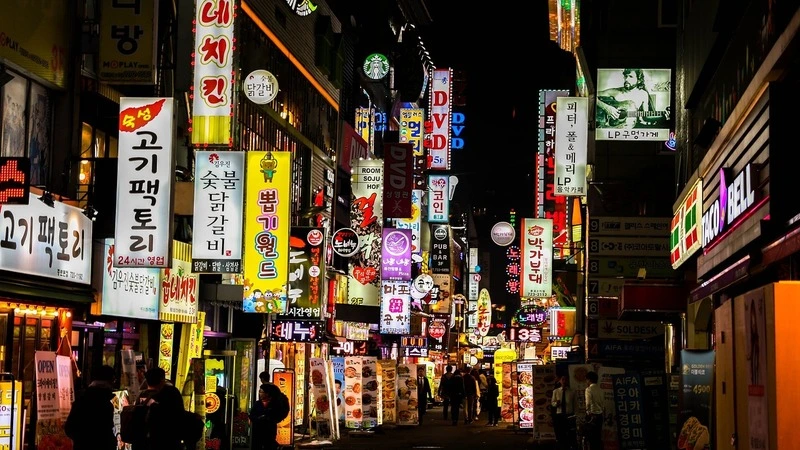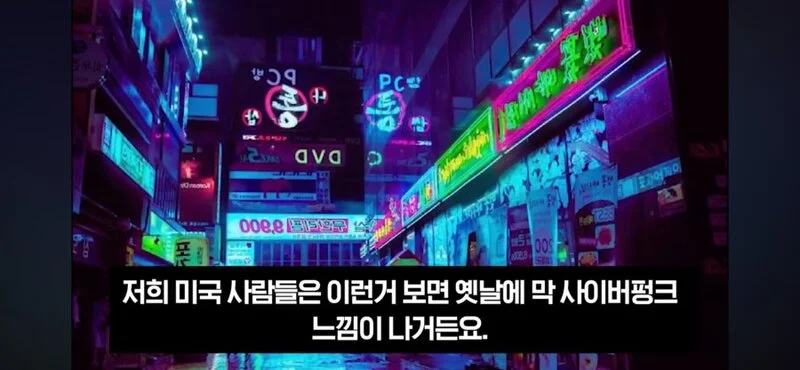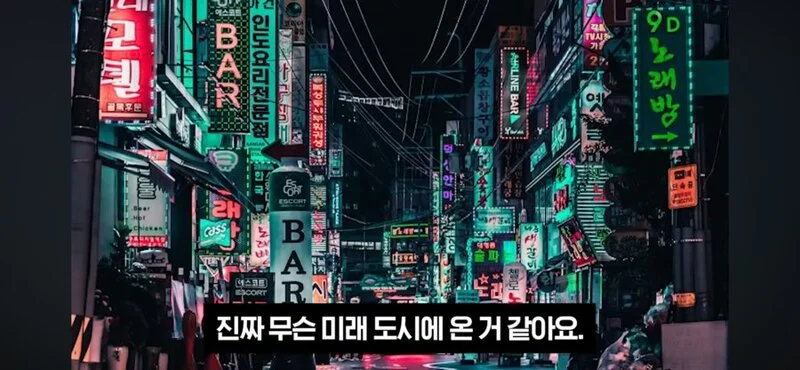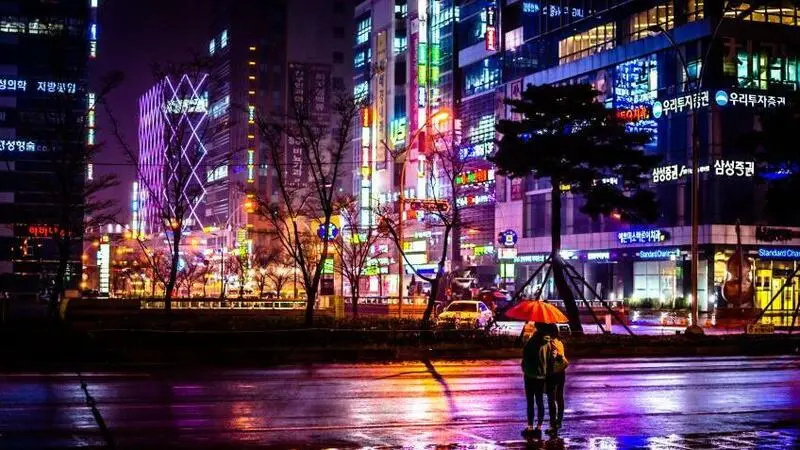Korean storefronts, adorned with vibrant neon signs, often elicit mixed reactions. While locals may view them as aesthetically cluttered, foreigners often find them strikingly captivating, likening them to a cyberpunk aesthetic. The chaotic blend of colors and lights, reminiscent of futuristic dystopian worlds, is precisely what many foreigners appreciate.
Introduction

Korean storefronts, adorned with a vibrant array of neon signs and illuminated lettering, often elicit mixed reactions. While locals may view these displays as aesthetically cluttered, international visitors often find them strikingly captivating. This article delves into the contrasting perceptions of Korean signage, exploring the cultural and practical factors that shape these divergent perspectives.
The Neon Allure: A Foreigner’s Perspective


To many foreigners, the neon-lit streets of Korea evoke a sense of cyberpunk futurism, a mesmerizing blend of vibrant colors and towering structures. This unique aesthetic, often reminiscent of science fiction or retro-futuristic imagery, holds a particular allure for visitors seeking an escape from the ordinary. The sheer density of signs, often obscuring the building facades, adds to the otherworldly charm, creating a sense of urban vibrancy and energy.
Beyond Tradition: Embracing the Urban Landscape
Contrary to the common assumption that foreign tourists seek out traditional or natural attractions, many are drawn to the distinctive urban landscapes of Korea. The neon-drenched streets, with their chaotic symphony of signs and lights, offer a glimpse into the country’s dynamic and modern culture. This appreciation for the urban aesthetic highlights the diverse interests of international travelers, who seek experiences that extend beyond traditional tourist fare.
A Tale of Two Perspectives: Koreans and Foreigners on Signage
The perception of Korean signage is largely shaped by cultural context. For Koreans, these signs serve a primarily functional purpose, providing information and visibility for businesses. The aesthetic appeal often takes a secondary role, leading to a perception of clutter and visual disarray. However, for foreigners, these signs transcend their practical function, becoming an integral part of the Korean visual identity. The vibrant colors, unique lettering, and dense arrangement create a captivating spectacle that embodies the country’s modern energy.
The Land of Limited Space: A Practical Necessity
South Korea’s limited landmass has played a significant role in shaping its urban landscape, leading to the vertical expansion of cities and the proliferation of signage. With businesses competing for attention in a confined space, neon signs and illuminated lettering have become essential tools for attracting customers. While this may compromise aesthetic considerations for some, it reflects the practical realities of urban life in Korea.
Neon Nostalgia: A Foreigner’s Fascination
For many foreigners, Korean signage evokes a sense of nostalgia, reminiscent of a bygone era when neon signs adorned streets worldwide. The vibrant colors and retro-futuristic aesthetic appeal to a sense of longing for simpler times, offering a glimpse into a world less dominated by digital technology. This fascination highlights the power of visual cues to transport individuals to different eras and evoke emotional connections.
A Double-Edged Sword: Appreciation and Discomfort
While foreigners often admire the unique aesthetic of Korean signage, the prospect of replicating it in their own countries is met with mixed reactions. Some express concerns about visual pollution and potential cultural homogenization, suggesting that the charm of Korean signage lies partly in its distinctiveness and context. This highlights the complex interplay between cultural appreciation and the desire to preserve one’s own identity.
Function over Aesthetics: A Korean Perspective
From a Korean standpoint, signage is primarily viewed as a functional tool for businesses, serving to inform and attract customers. The aesthetic appeal often takes a secondary role, leading to a more pragmatic approach to signage design. This perspective reflects the cultural emphasis on practicality and efficiency, prioritizing functionality over purely aesthetic considerations.
Beyond Aesthetics: The Practical Benefits of Signage
Despite the mixed opinions on their aesthetics, Korean signage offers several practical benefits. The vibrant lights and illuminated lettering aid in navigation, particularly at night, making it easier for pedestrians to locate businesses and landmarks. Additionally, the signage serves as a form of economic stimulus, contributing to the lively atmosphere of Korean streets and attracting both locals and tourists.
Conclusion: A Tapestry of Perceptions
Korean signage presents a fascinating case study in the interplay of cultural perceptions, practical considerations, and aesthetic preferences. While locals may view these displays as utilitarian and occasionally cluttered, foreigners often find them captivating and representative of Korea’s unique urban identity. The neon-lit streets serve as a testament to the country’s dynamic culture, blending traditional elements with modern innovation, and offering a glimpse into the diverse perspectives that shape our understanding of the world around us.
Here’s a link to MLBPARK.Photographer: min woo park Source: Pixabay
I appreciate you taking the time to read this post. Please share your thoughts in the comments!


This turned out great! I love neon signs!!!